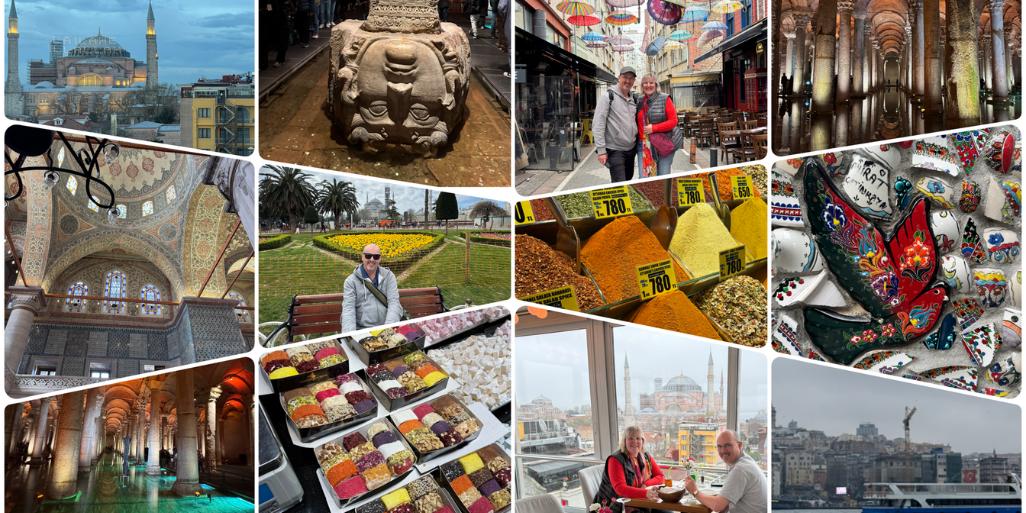A view from the past 10 world cities in the 1800s
Can you imagine what some of the most famous cities in the 1800s were like? To be able to time travel to bygone eras would be my dream. In this article, we can catch a glimpse of the past.
Over 125 years ago, my great-grandfather was awarded a book entitled “One World in Pictures” for Proficiency and Punctual Attendance at school.
Contained within the book are photographs of many of the cities and landmarks that are so familiar to us today. What you will see, however, is a glimpse into the past of cities and life in the 19th century.
Where possible, I have added a more recent photograph to appreciate just how much has changed over the last 125-plus years.

10 cities around the world in the late 1800s
Paris, France
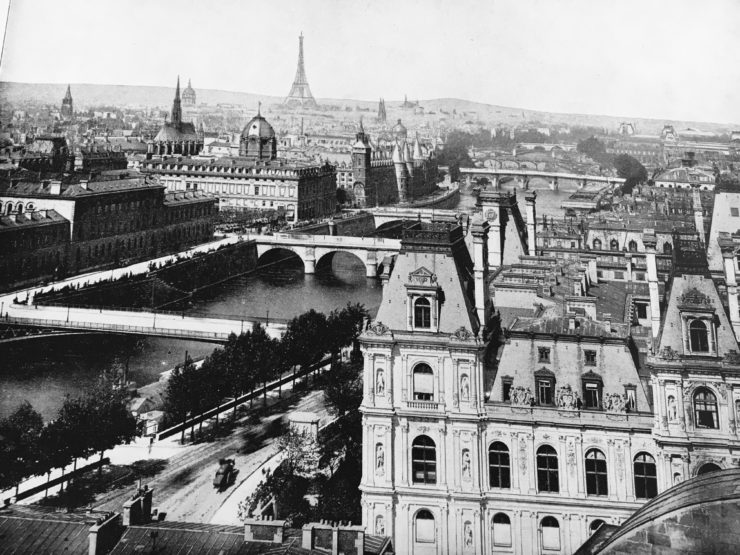
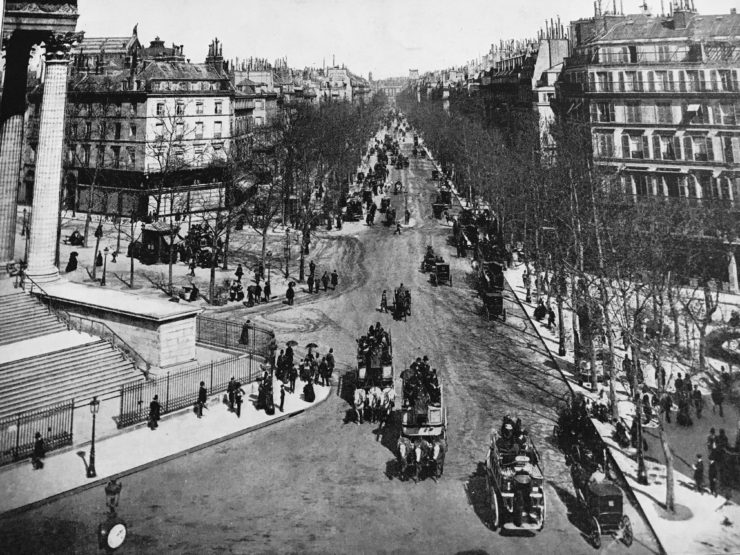
Paris, the City of Light, was already captivating visitors in the late 1800s with its grand boulevards, elegant architecture, and unmistakable charm.
In the image above, you can see the wide avenues that were part of Baron Haussmann’s vast urban redesign. His work transformed the city with broad, orderly streets that many of us still recognise today.
These glimpses of Paris from over 125 years ago show a city on the cusp of modernity, where horse-drawn carriages passed by buildings that remain familiar to this day.
Looking at then and now, it’s fascinating to see just how much has changed, and how much has stayed the same, in one of Europe’s most beloved cities.
Stockholm, Sweden
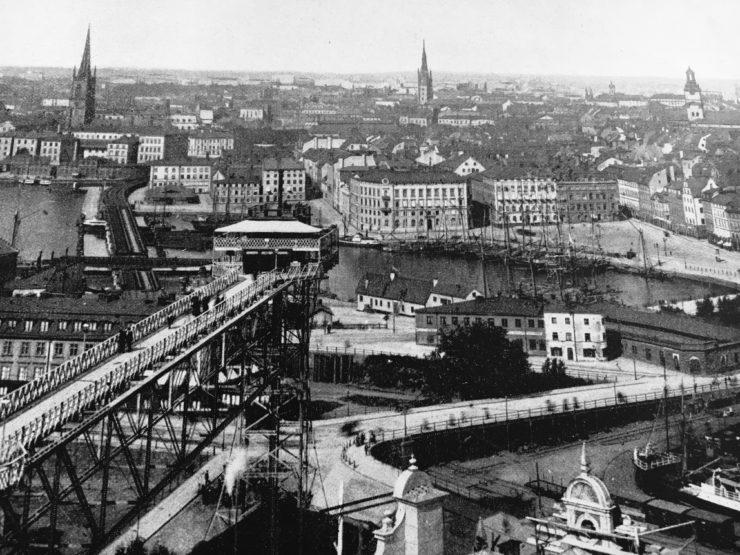
This image of Stockholm from the late 19th century captures a fascinating moment in the city’s transformation. In the foreground, you can see the old Katarinahissen (Katarina Elevator), which was constructed to connect the heights of Södermalm with the lower city and waterfront a practical solution to Stockholm’s steep terrain.
Look beyond, and the spires of Gamla Stan rise above the orderly streets and quiet harbour. It’s a rare view of the Swedish capital before the arrival of modern high-rises and bustling traffic, when sailboats still lined the docks and church towers dominated the skyline.
Seeing this snapshot of the past offers a powerful reminder of how cities evolve, yet often retain the essence of what makes them special.
Lucerne, Switzerland
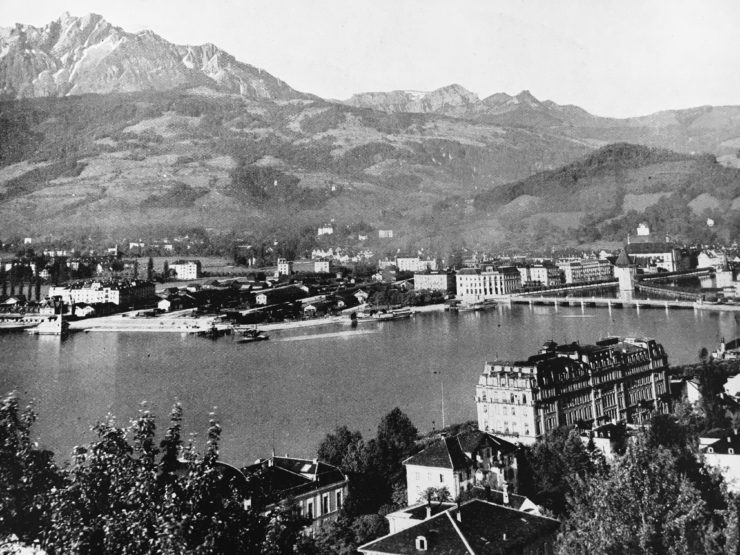
This stunning view of Lucerne from the late 1800s showcases a peaceful lakeside town set against the towering Swiss Alps. The calm waters of Lake Lucerne reflect a city that was already known for its beauty, even before the arrival of mass tourism.
Spot the long-standing landmarks, including the Chapel Bridge in the distance, and the elegant lakeside buildings that hint at Lucerne’s future as a popular destination. The streets were quiet, the lake dotted with early paddle steamers, and Mount Pilatus loomed just as impressively in the background as it does today.
It’s remarkable to see how the natural setting remains unchanged, while the town itself has evolved into a modern yet still charming hub in central Switzerland.
Vienna, Austria
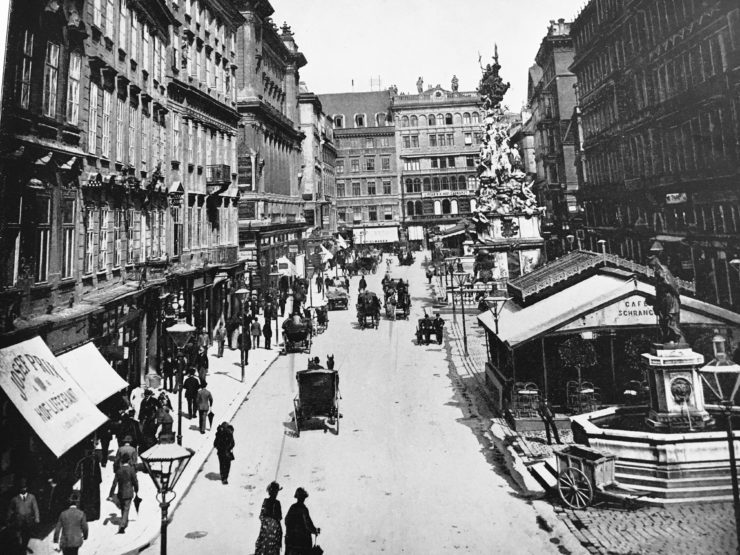
This photograph captures The Graben, one of Vienna’s most famous boulevards, in the late 1800s. Even then, it was a busy and elegant part of the city centre.
Horse-drawn carriages shared the street with well-dressed pedestrians, and cafés like the long-standing Café Schranne offered places to pause and people-watch. The ornate Plague Column (Pestsäule) dominates the middle of the scene, a striking reminder of Vienna’s Baroque heritage and its recovery from the Great Plague.
Surrounded by grand facades, this stretch of the city has long been a symbol of Vienna’s imperial past — and remains a vibrant part of the city to this day.
Milan, Italy
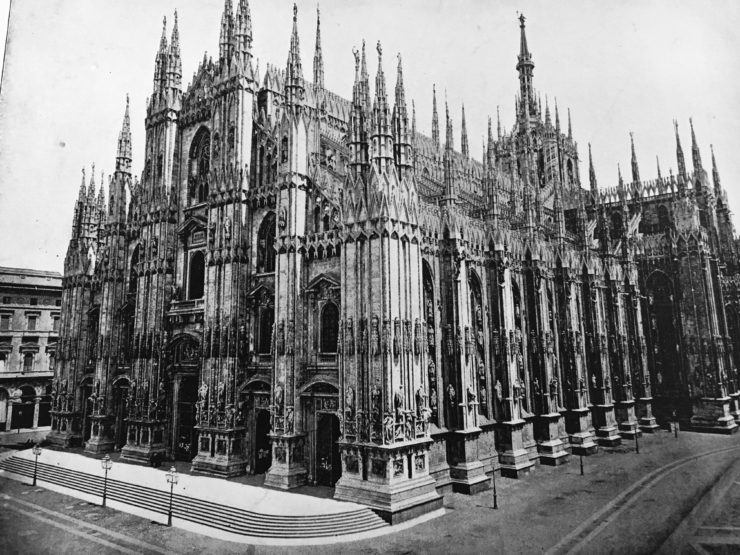
The Milan Cathedral, or Duomo di Milano, was just as breathtaking in the late 1800s as it is today. This image captures the cathedral’s intricate Gothic façade, with its forest of spires, statues, and delicate stonework.
Construction on the Duomo began in the 14th century and wasn’t officially completed until the 20th century, though by the time this photo was taken, it had long been the heart of the city.
What’s striking is how open and quiet the surrounding piazza appears compared to the crowds it draws now. It’s a rare look at one of Italy’s most iconic landmarks before Milan became the bustling fashion and business capital we know today.
Copenhagen, Denmark
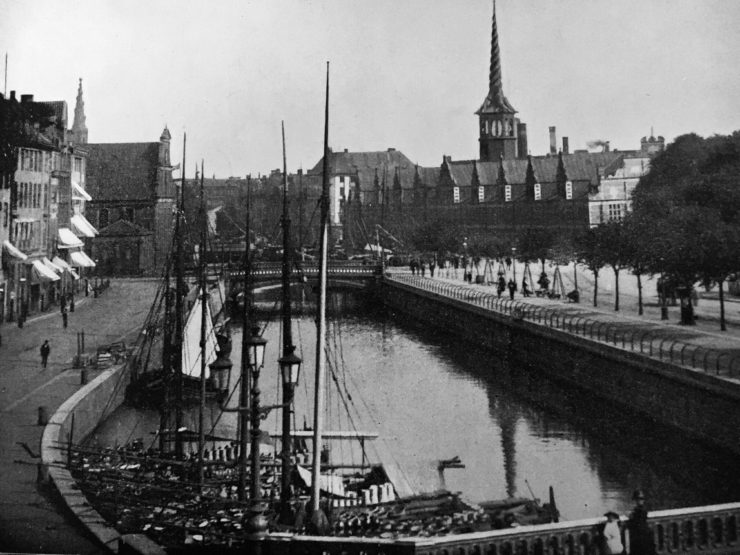
This late 19th-century view of Copenhagen captures a peaceful canal scene, with sailing ships moored along the edge and elegant lamp posts lining the street.
In the background stands the Børsen, Copenhagen’s 17th-century stock exchange, instantly recognisable by its unique dragon-tail spire. Sadly, this iconic building was destroyed by fire in 2024, making historic photographs like this all the more meaningful.
On the right, a tree-lined promenade hints at the city’s relaxed rhythm in earlier times. While much has changed, Copenhagen has retained its charm, and this image reminds us of how precious and fragile that heritage can be.
Cape Town, South Africa
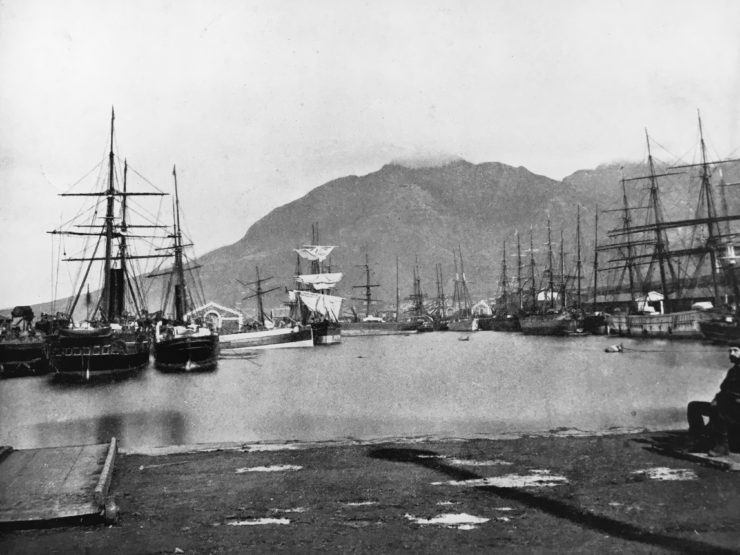
This photograph of Cape Town’s harbour in the late 1800s offers a powerful glimpse into the city’s colonial past. Tall ships fill the dock, their sails furled against the shadow of Table Mountain. At the time, Cape Town was a key stop along global shipping routes, linking Europe to Asia and beyond.
The mountain, now a symbol of South Africa, has stood watch over centuries of change. The port has since modernised and expanded, but the backdrop remains just as iconic.
Looking at this scene, it’s easy to imagine the sounds and bustle of a working harbour during the age of sail.
Rio de Janeiro, Brazil

This view of Rio de Janeiro in the late 1800s shows a calm harbour dotted with tall ships, set against the dramatic natural landscape that still defines the city today.
Sugarloaf Mountain rises to the left, instantly recognisable even without the modern skyline or cable cars. At the time, Rio was a major port in the Atlantic trade network, with ships arriving from around the world.
The stillness captured in this image is in sharp contrast to the lively and vibrant city Rio has become, but the surrounding scenery remains just as spectacular. It’s a moment in time, frozen before the arrival of skyscrapers and samba rhythms.
Washington DC, USA
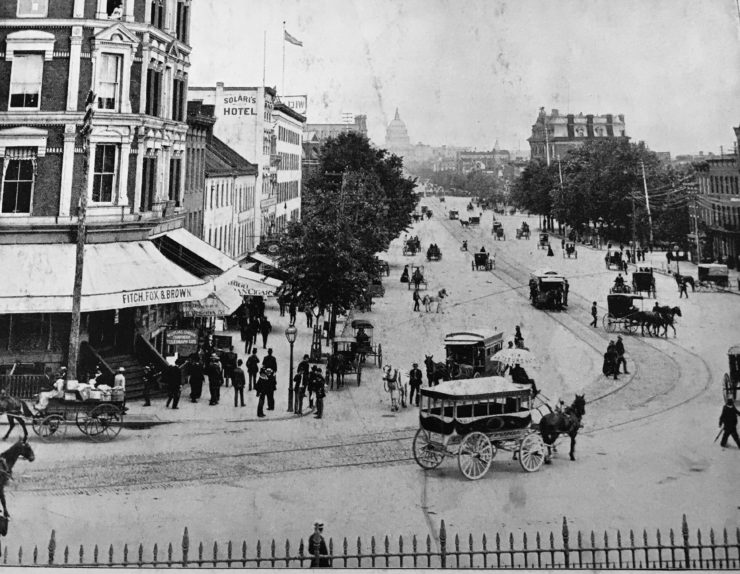
This bustling scene from the late 1800s captures Pennsylvania Avenue in Washington, D.C., looking toward the U.S. Capitol. Horse-drawn streetcars and carriages fill the wide avenue, while pedestrians navigate the busy sidewalks beneath striped shop awnings.
On the left, buildings like Fitch, Fox & Brown and Solari’s Hotel give us a glimpse into the businesses of the time. Even then, Pennsylvania Avenue was at the heart of the capital, linking the White House and Capitol Building.
While so much has changed, the avenue’s role as a central artery of American life remains just as significant today.
Cairo and the Harbour of Alexandria, Egypt
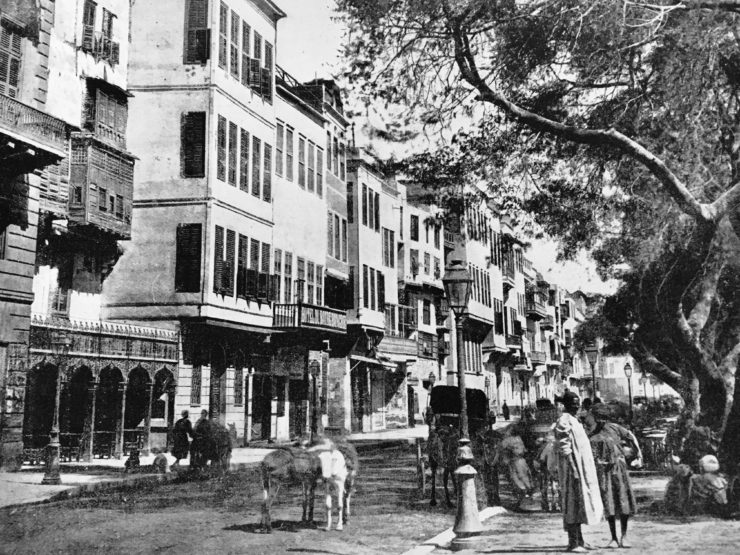
This street view from the Ezbekiyeh district of Cairo in the late 1800s offers a fascinating look at a neighbourhood once considered the heart of modern Cairo.
Known for its theatres, gardens, and literary cafés, Ezbekiyeh was a vibrant part of the city’s cultural life during the 19th century.
The architecture reflects Ottoman influence, with wooden balconies and shuttered windows lining the street. Figures in traditional dress, donkeys, and carriages hint at the everyday rhythms of life at the time.
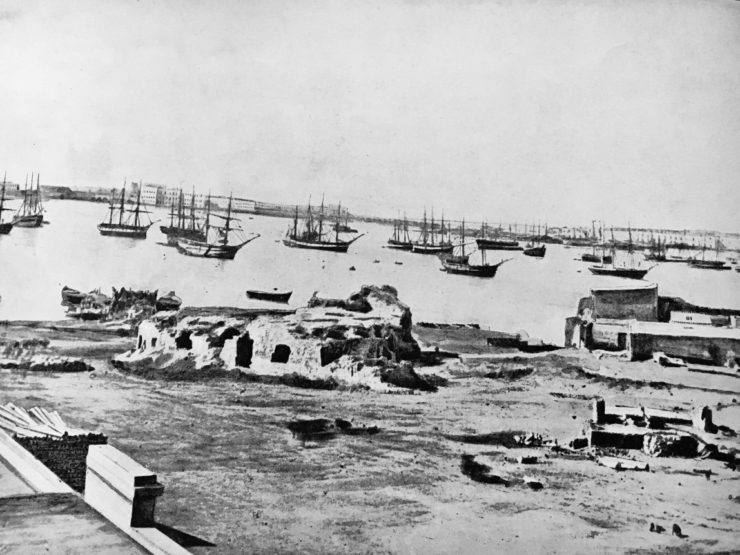
This rare photograph of Alexandria’s harbour in the late 1800s captures a moment in time when the city was a vital gateway between Europe, Africa, and the Middle East.
The water is filled with tall ships, reflecting Alexandria’s status as one of the busiest ports on the Mediterranean. Along the shoreline, you can see crumbling ruins and low stone buildings, a poignant reminder of Alexandria’s rich and layered history, which stretches back to ancient times.
In this quiet scene, there are no cranes or modern cargo ships, just the steady rhythm of sails, trade, and tide. Though much of the coastline has since been redeveloped, Alexandria’s connection to the sea remains a defining feature of the city.
Cities around the world in the 1800s
I hope you’ve enjoyed this glimpse into the past, seeing what life looked like in cities around the world over 125 years ago.
It’s fascinating to see how much has changed in a relatively short time, and how some places have held on to their historic charm.
These old photographs offer a unique window into everyday life in the 1800s, and remind us just how much history still shapes the places we explore today.



